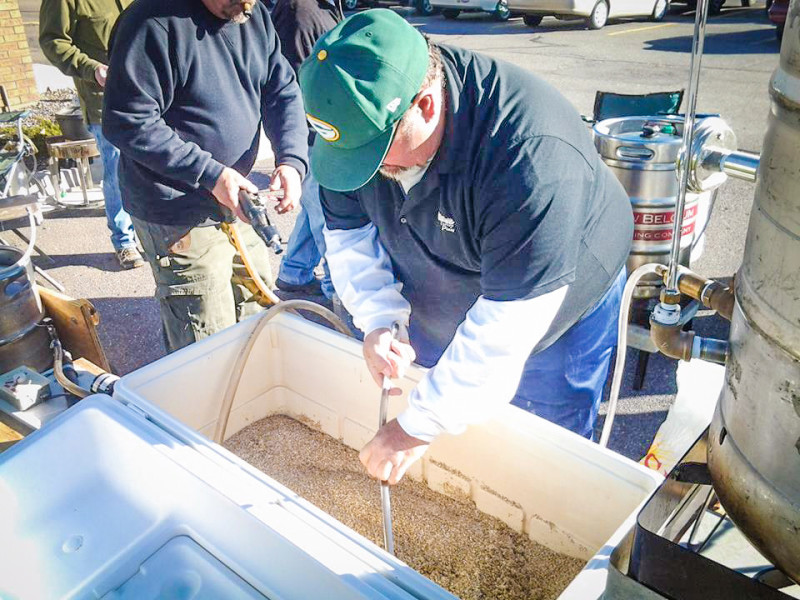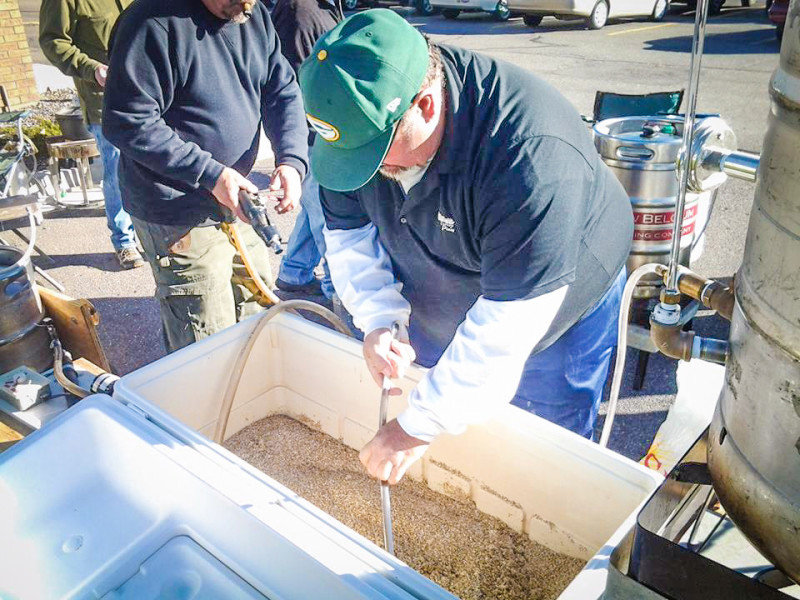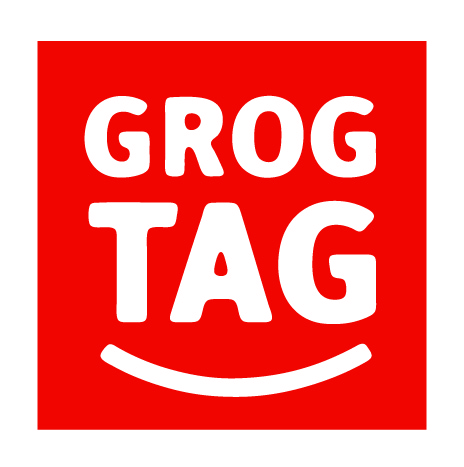
By Matt Bolling, AHA Events & Membership Coordinator
Now in its 19th year, the American Homebrewers Association’s (AHA) Learn to Homebrew Day has become a highly anticipated staple of the fall season for thousands of people around the world. On the first Saturday of every November, hundreds of homebrew clubs, shops, craft breweries, beer bars, and individuals get together to teach their yet-to-brew friends the art of making beer at home.
In 2016, the AHA partnered with 300 sites around the world to celebrate Learn to Homebrew Day (LTHD). More than 4,400 people brewed 6,232 gallons (23,591 liters) of beer in 1,150 batches. We were proud to have 46 states and 11 countries teaching new homebrewers the ropes!
The AHA is exited to partner with LTHD site hosts again this year. Past hosts will already be familiar with the provided promotional materials, but here are a few ways that you can take your own LTHD to the next level!
1. Celebrate the whole week
It might be called Learn to Homebrew Day, but that doesn’t mean you should limit the fun to just one day! Sure, the first Saturday of November might be the one day each year completely devoted to teaching the art and science of beer brewing, but we encourage you to expand on LTHD and make it your own!
The spirit of camaraderie can be stretched out into a Learn to Homebrew Week that culminates in a grand event on Saturday, and can involve multiple locations and organizations/businesses. Here is a sample timeline that you can adapt to bring in new (or not-so-new) homebrewers throughout the whole week:
-
- Work with your club members of fellow homebrewers to host multiple brew sites at multiple locations throughout the week
- Host a beer trivia night with this Beer Jeopardy game board provided by the AHA
- Partner with a local brewery to host a homebrewers night in their taproom
- Recruit a local speaker to give a presentation, or screen a recorded presentation from the Zymurgy Live or Homebrew Con seminar archives
- Organize a homebrew competition, and announce the winner at your LTHD event
- Arrange a homebrew and food pairing dinner
- You get the point…
2. Give Back
With 4,417 estimated participants in the 2016 Learn to Homebrew Day celebration, we taught a lot of people to brew last year. If every LTHD site registrant were to commit to adding a philanthropic effort to their event, we could help hundreds of communities around the country. Not only will partnering with a non-profit benefit your neighborhood, it will instill excitement and pride among your attendees. Here are some ideas.
-
-
- Host a canned food, toy, or coat drive. Learn to Homebrew Day is hosted each fall, and Rotary clubs nationwide are looking for ways to engage citizens in their communities. If a coat drive isn’t viable, consider partnering with local food pantries to host a food drive, or host a toy drive of your own to benefit a Toys for Tots chapter in your area.
- Teach a Veteran to Homebrew Day. Held in honor of all US veterans and victims of war, Veterans Day is always November 11, which is a Saturday in 2017. The American Homebrewers Association encourages you to contact your local Veterans Health Administration (VHA) facility to invite your local veterans out to celebrate Veterans Day early on Learn to Homebrew Day.
- Donate. Philanthropic organizations all over the country depend heavily on donations from their local communities. Instead of requesting cash or check donations at your event, you can work with a similar organization in your area (craft brewery, homebrew store, or craft beer bar) to host a raffle or silent auction to raise money.

3. Partner with Tourism Offices
In 2013, Colorado.com estimated that 43 million people visited its website to find information on the region. The Festivals & Events section alone registered 450,000 visitors throughout the year, with upwards of 10,000 people visiting some of the most popular event posts. It just goes to show that your tourism office is a sure-fire way to attract a new audience to your LTHD event. We don’t recommend inviting thousands of people to your site, but the added exposure is sure to bring in some eager new faces!
At a minimum, you can register your event with local tourism websites. If you want to take it even further, you could request that your local municipality endorse your event in a public space such as a park or public forum.
And don’t forget that homebrew shops and clubs can request a list of local media contacts that you can use to send a press release about your event to.
4. Learn to Homebrew (Every) Day
Yes, we know that it’s called Learn to Homebrew Day, but why should the learning stop at homebrewing? Brewing beer is just the beginning! We all want to stay true to the brew, but let’s not forget that there is much more to quality beer than brewing processes alone. Here are just a few ways that you can teach your audience about beer while also teaching them to brew:
-
-
- Learn To Pair Beer and Food Day. What goes better with craft beer than food? Well, maybe more craft beer…but food is a pretty close second! Whether it be cheese, chocolate, or Cool Ranch Doritos, you’ll find great materials and pairing suggestions on the CraftBeer.com website.
- Learn To Blend Day. Some of the best beers in the world aren’t taken directly from fermentation to consumption. Many of them are blended with older or younger versions of themselves—or even with other beer styles—to craft a delicately balanced beverage. One of the best ways to discover an entire new world of beer is to learn how blending can open up new possibilities.
- Learn About Off-Flavors Day. OK, we fully admit that LAOFD probably has a better chance of becoming a text-messaging abbreviation than an acronym for Learn About Off-Flavors Day. However, learning about off-flavors is an important lesson for any homebrewer or craft beer enthusiast. Just doctor a well-made commercial beer with special off-flavor extracts and learn to detect problems from diacetyl to oxidation. AHA-recommended off-flavor kits can be purchased from our friends at the Beer Judge Certification Program.
5. Sign Up New AHA Members at Your LTHD Event
Be sure to request copies of Zymurgy: An Introduction to Homebrewing to hand out to some of the newbies at your event. This free magazine contains an AHA membership form that explains the benefits of being an AHA member. Or you can introduce your attendees to Brew Guru, a smartphone app that offers users a 2-week trial AHA membership upon download. Attendees to your event can go home with catered homebrewing content, and a complete guide to setting up their first brew day all on their iPhone or Android device!
To register your own Learn to Homebrew Day event, visit the Learn to Homebrew Day Event Registration page or find a LTHD event in your area. For more tips on how to make your LTHD event successful, check out my article, “5 Tips for Hosting a Big Brew Event,” which offers valuable suggestions you can adapt for Learn to Homebrew Day.
* * *
Matt Bolling is the Events & Membership Coodinator for the American Homebrewers Association.
The post Relax, Don’t Worry— It’s Learn to Homebrew Day appeared first on American Homebrewers Association.

![]()





